Apr
15
2009
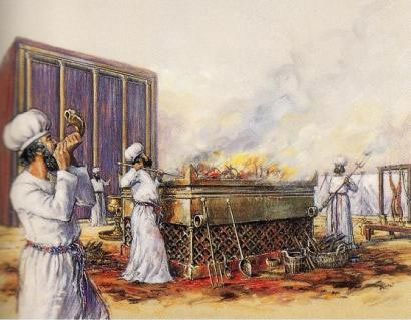
See to it that you do not refuse him who speaks. If they did not escape when they refused him who warned them on earth, how much less will we, if we turn away from him who warns us from heaven? At that time his voice shook the Land, but now he has promised, “Once more I will shake not only the Land but also the heavens.” The words “once more” indicate the removing of what can be shaken—that is, created things—so that what cannot be shaken may remain. Therefore, since we are receiving a kingdom that cannot be shaken, let us be thankful, and so worship God acceptably with reverence and awe, for our “God is a consuming fire.” Hebrews 12:25-29
The context of Hebrews is AD70. The destruction of Jerusalem meant that the saints had received the kingdom (Daniel 7).
Continue reading
Comments Off | tags: AD70, Altar, Atonement, Azal, Hebrews, Jericho, Passover, Tabernacle | posted in Biblical Theology, The Last Days
Apr
12
2009
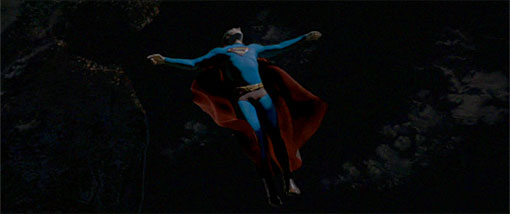
The movie Superman Returns ends with some powerful iconography. Lex Luther has used a crystal stolen from Superman to create his own ‘new earth.’ Unlike Superman’s white-as-snow fortress of solitude, this is made of dark stone, Adamic earth. It rises up out of the sea and its growth threatens mankind.
Superman carries the weight of the entire sinful rock, and its growing kryptonite ‘spears’ pierce him. He ‘dies’ in the air and his fall to earth creates a ‘tomb.’ It’s worth a watch.
My point is, the idea of Christ being ‘lifted up’ is more than the bronze serpent, more than us ‘lifting Him up’ in our witness. [1]
Lifted up between heaven and earth, He was an open scroll. The bloodied lid of the Ark, the Word engraved (opened) on tablets of flesh. [2] In the sky, He was a new kapporet [3], a firmament covering to replace the old one that was ready to vanish away. He was a veil that was open, still protecting yet providing full access.
The Old Testament is full of mediators who are ‘lifted up.’ Revelation shows the Satanic new earth (Herod and Rome) thrown down from her mediatory position ‘in the air’, and the saints ascending to meet their Lord ‘in the air’ as a new mediatorial city.
a) Christ was lifted up.
b) Satan was thrown down.
a1) The saints of the New Jerusalem ascended.
b1) The compromised mediators were thrown down.
Satan is no longer the prince of the powers of the air.
__________________
[1] A Herod also fulfilled the bronze serpent image, eaten alive by maggots on his throne ‘in the air’ after speaking ‘like a god.’ He prefigured the dirty scavenging birds feasting on the harlot in Revelation.
[2] The Tabernacle layout is a symbolic cruciform man. Notice that Christ on the cross was beneath ‘the Name’, an open scroll containing the disputed truth of His identity. The Lord’s Name was said to dwell above the lid of the Ark.
[3] See Peter Leithart, The Footstool of His Feet.
Comments Off | tags: Add new tag, Ark of the Covenant, Covenant curse, Crucifixion, Film, Herod, Peter Leithart, Preterism, Tabernacle, Typology | posted in Biblical Theology, The Last Days
Apr
11
2009
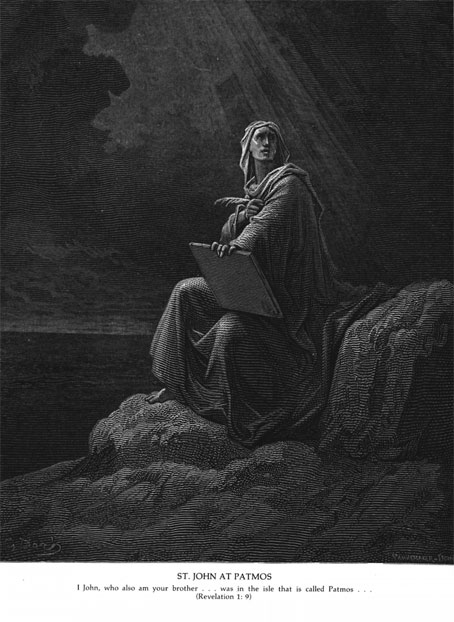
There are conflicting traditions concerning John. A widely held opinion is that he was banished to Patmos by the Emperor Domitian who reigned from AD 81 through 96. If so, this makes preterism a paper tiger.
Continue reading
Comments Off | tags: Bible history, Church History, David Chilton, Ezekiel, John, Kenneth Gentry, Literary Structure, Preterism | posted in The Last Days
Apr
10
2009
or An answer for those who think modern day Israel has any special place in Bible prophecy.
After the scattering at Babel, the Lord tore the world in two by calling Abram. With the end of this large Division, signified by circumcision, there was no more distinction between the priest nation and the Gentiles. James Jordan writes:
Continue reading
Comments Off | tags: Abraham, Babel, Bible history, Dispensationalism, James Jordan | posted in Biblical Theology, The Last Days, The Restoration Era, Totus Christus
Apr
10
2009
“For as often as you eat this bread and drink the cup, you proclaim the Lord’s death until He comes.”
If, as preterists maintain, Jesus came in AD70, why do you celebrate the Lord’s Supper?
To answer as an orthodox preterist (I’m sorry, but ‘partial’ doesn’t work for me), I would mention that the communion is a covenant memorial that reminds God of the covenant. The covenant is the key.
Continue reading
4 comments | tags: AD70, Communion, James Jordan, Peter Leithart, Resurrection, Revelation | posted in Against Hyperpreterism, Biblical Theology, The Last Days
Apr
10
2009
[This is based on a post by Peter Leithart, Jew – Gentile – Jew ]
In the NT, I believe Hebrews functions as a “Book of Deuteronomy.” After an “exodus” from Jerusalem (as Egypt) and time in the wilderness, the Jewish Christians scattered throughout the empire were facing the destruction of their city (as Jericho). From Hebrews to Jude, the focus of these final New Testament writings shifts from the Gentiles back to the Jews.
Gospels – to the Jew
Acts – first to the Jew, then to the Gentiles: exodus from Jerusalem
Romans to Philemon – to the Gentiles
Hebrews to Jude – to the Jews again
Revelation – destruction of Jerusalem
So there is a Jew (Leviticus), Gentile (wilderness – Numbers), Jew (Deuteronomy) pattern repeated.
The Law is being repeated by Christ as Moses “speaking from heaven” before the crossing of the foetal church into the heavenly country as a new mediatorial government. The writer of Hebrews was warning them not to die in the wilderness as their ancestors did.
Josephus tells us that the Romans beseiged the city when Jews from all over the empire were in Jerusalem for Passover. Their table became a snare.
Comments Off | tags: Hebrews, Josephus, Peter Leithart | posted in Biblical Theology, The Last Days
Apr
10
2009
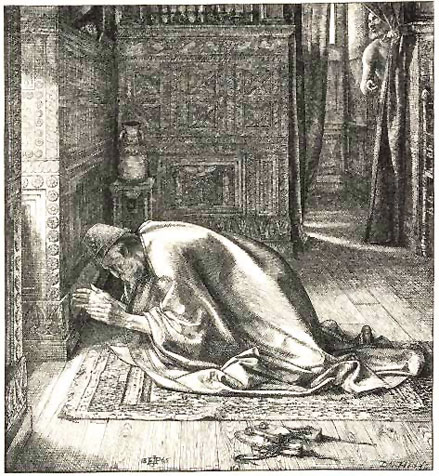
A new Adam (High Priest) ruled the wild animals of the Gentile kingdoms, but without a king this rule would be truly priestly. Daniel prefigured the nature of this new kingdom: obedience would bring persecution, and suffering as witnesses before the Gentiles would be the means of Gentile conversion. A new Israel would be the initial fulfilment of the despised, suffering priestly servant of Isaiah 53. When the Lord scattered His people for their sin, He also spread them to the four winds as witnesses to the empire.
Continue reading
Comments Off | tags: Daniel, Esther, Greek philosophy, Isaiah, Mordecai, oikoumene, Peter Leithart, Power of the Gospel, Typology, Witness | posted in Biblical Theology, The Last Days, The Restoration Era
Apr
10
2009
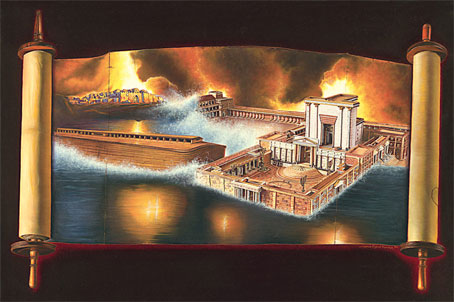
A couple of guys have written a book called Beyond Creation Science. As preterists, they understand there was a symbolic ‘flood’ across the Land of Israel under both Nebuchadnezzar’s Babylon and Nero/Vespasian’s Rome. Problem is, they read this back into Noah’s flood and try to say that this was only a local flood, which then allows them to compromise with old-earth Creationism.
It was ‘long-age’ geological assumptions that provided a ‘foundation’ for Darwin’s long-age biological fantasy. I would recommend Tas Walker’s site, Biblical Geology, for someone who really knows his stuff.
The position of these fellows causes more problems than it fixes. It makes the Bible’s very detailed chronology a joke, and forces a gap of millions of years into Genesis 1.
Here’s the solution:
Adam’s failure brought physical de-Creation. Cain founded a corrupt civilisation whose evil influence triumphed and was destroyed in a literal flood. Just like Cain, Ham was cursed, and his son Canaan’s influence led to social de-Creation. As God raised new land out of the waters after the flood, God would now perform another Creation miracle. In calling Abram, God was socially dividing the waters of the nations into the Land and the Sea. The era of the patriarchs, ruling fathers, began. God called Abram, and tore the world in two.
The land and sea division was a literal, physical land and sea in early Genesis. The ark of Noah was a literal ’world-in-a-box’, a safehouse and doorway to a new world. But when God called Abram, the ‘Land and Sea’ division was purely social, and the Tabernacle and Temple were a symbolic ‘world-in-a-box.’ These guys have confused these two and unwittingly undermined the authority of Scripture.
[Also, on hyperpreterist ‘Covenant Creationism’, see A Chronic Hysteresis.]
Comments Off | tags: Abraham, Against Hyperpreterism, Bible Chronology, Covenant Creationism, Temple, The flood | posted in Against Hyperpreterism, Biblical Theology, Creation, The Last Days
Apr
10
2009
“Behold, the day of the LORD comes, Cruel, with both wrath and fierce anger, To lay the land desolate; And He will destroy its sinners from it. For the stars of heaven and their constellations Will not give their light; the sun will be darkened in its going forth, and the moon will not cause its light to shine.”
You’ll never understand a book if you only ever read the last chapter. If you thought this quote was from the New Testament you are almost right. It is from Isaiah 13, and Jesus quotes it. It begins: “The burden against Babylon which Isaiah the son of Amoz saw…”
Would Jesus’ audience have thought He was referring to the destruction of the cosmos? Nup. They would (or should) have realised that He was calling Judah a new Babylon, and that the “sun, moon and stars”, the governing lights of her kingdom were about to come crashing down.
Jesus had a sharp mind, and a sharp mouth. A lot sharper than us when we misinterpret Matthew 24.
Comments Off | tags: Apocalyptic, Babylon, Hermeneutics, Isaiah | posted in The Last Days
Apr
10
2009
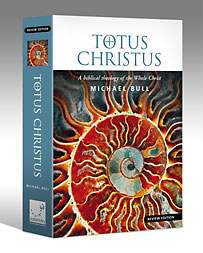 “And now, indeed, the hand of the Lord is upon you, and you shall be blind, not seeing the sun for a time.” And immediately a dark mist fell on him, and he went around seeking someone to lead him by the hand.” Acts 13:11
“And now, indeed, the hand of the Lord is upon you, and you shall be blind, not seeing the sun for a time.” And immediately a dark mist fell on him, and he went around seeking someone to lead him by the hand.” Acts 13:11
The blindness of Elymas caused Sergius Paulus to believe. The temporary blindness of a Jew brought about the conversion of a Gentile.
A repeated symbolic concept in Scripture is that of sight and blindness. Samson and King Zedekiah both lost their eyes. Isaac and Eli were blind. From Genesis 1:4, 3:6 and 6:2 we learn that eyes are organs of discernment and judgment. The process of maturity makes wise judges who are “the eyes of the Lord”, walking “to and fro on the earth”, collecting evidence to present before His court. Bible symbols are consistent, and their meanings become plain to the saints with their “new eyes.” Those who refused to obey the gospel twisted the Scriptures to their own destruction (2 Peter 3:16).
“For I do not desire, brethren, that you should be ignorant of this mystery, lest you should be wise in your own opinion, that blindness [hardness] in part has happened to Israel until the fullness of the Gentiles has come in.” Romans 11:25
…Herod and the Jews had symbolically become Egypt, hardened like Pharaoh (Romans 9:17-18; Hebrews 3:16; 8:9; 11:26-29; Jude 1:5; Revelation 11:8). The old Jerusalem was Hagar, and the New Jerusalem was Sarah. Christians, not Jews, were “the promised child.” Judaism had become childless like Naomi, and it was only the “fullness” of outsiders, Peter’s “unclean animals”—Ruth—that rescued the people of God from spiritual famine, the extinction of unbelief. The barrenness of Egypt was replaced with the harvest of Pentecost.
…Agabus the prophet foretold a famine in Judea (the curse for the shedding of Stephen’s innocent blood), but the Antioch saints sent relief (the richness of ‘Ruth’) to those in Judea.
Comments Off | tags: Acts, Isaac, Paul, Ruth, Samson, Typology, Zedekiah | posted in Biblical Theology, The Last Days, Totus Christus































